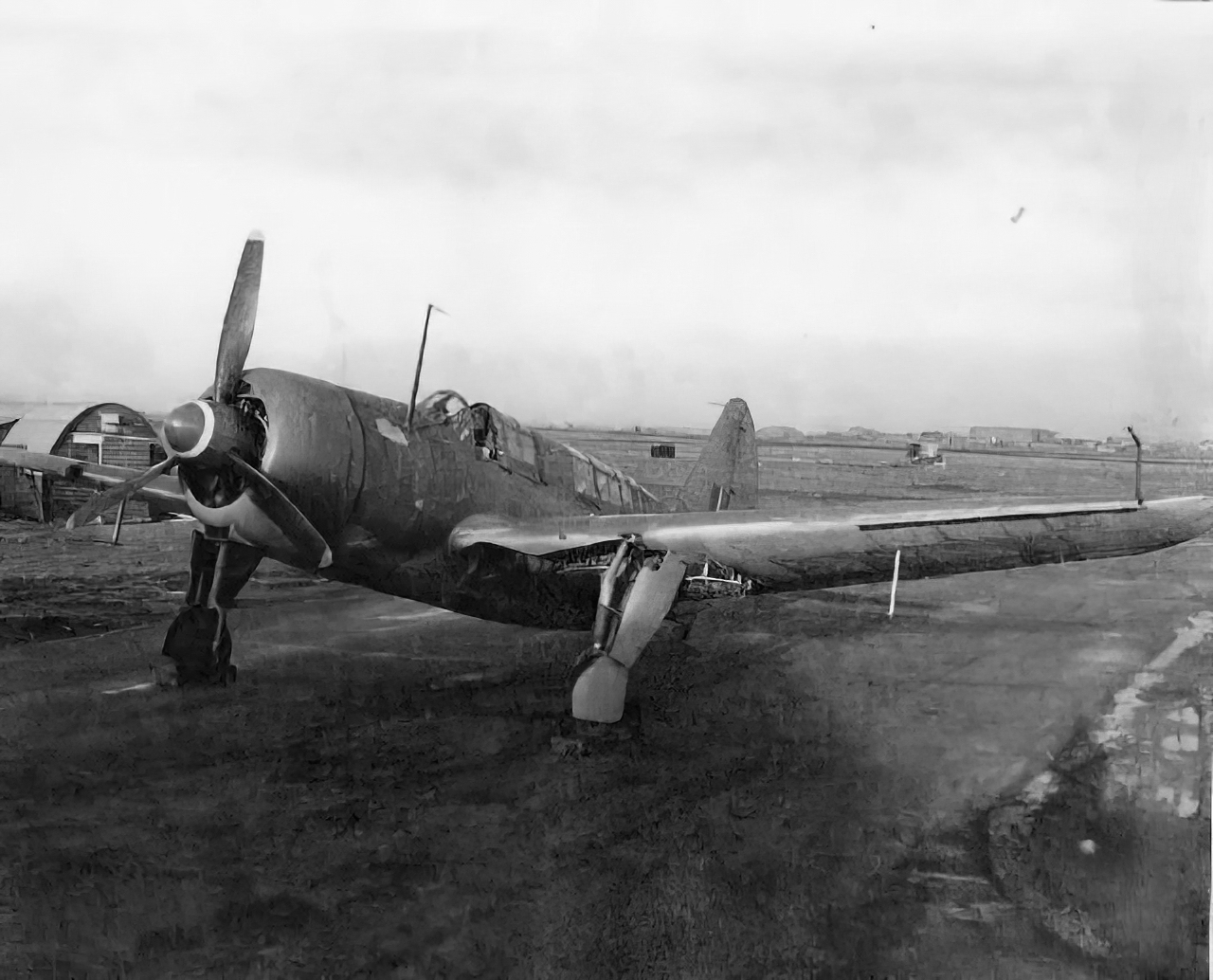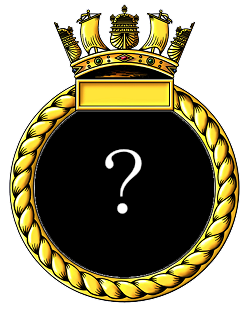



No.1820 squadron officially formed in the United States at US Naval Air Station Brunswick, Maine, on April 1st 1944 as a dive bomber squadron under the command of Lt. Cdr (A) H.I.A. Swayne DSC RN. Initial equipment was 9 Curtiss SBW-1B Helldivers and a squadron strength of 8 pilots and 8 observers.. After familiarisation with the aircraft and equipment the squadron moved to US Naval Air Station Squantum, Massachusetts, on May 1st to begin training in earnest to prepare for active service.
It is believed that some of the squadron aircrew had completed an intensive dive bombing course at USNAS Vero beach, Florida, [1] beginning in July 1943, prior to the formation of the squadron; one pilot was killed during this training. Acting Lt. Cdr. R. J. Grant-Sturgis, RNVR died when the Douglas SBD Dauntless in which he was training failed to pull out of a dive in time and dove into the sea killing both him and his US Navy instructor. It is highly probable that Lt. Cdr. Grant-Sturgis was the intended commanding officer of the Royal Navy’s only Dive Bomber squadron.
The Curtiss Helldiver was a
difficult aircraft to master and the squadron suffered
another tragedy on June 6th 1944 when JW120, flown by
Sub-Lt. A. J. Dawson, RNVR with Air Mechanic (Engines) 1st class
S. C. Wells on board, flew into the ground at Wellesley,
Massachusetts and burnt out killing then both. There were
three more incidents in June, all on the 24th while the
squadron was conducting Deck Landing Training on the
USS
CHARGER; Sub-Lt. J. Fenwick, RNZNVR had to make a forced
landing in the sea after JW122 suffered engine failure, he
was rescued OK. Sub-Lt. E. Pearson, RNVR also made a forced
landing in the sea when JW108 suffered engine failure after
take-off from Squantum, he was rescued OK. Sub-Lt. A. E.
Cornabe, RNVR flying in JW116 made it to the ship but made a
bad landing and ended up in the barrier on
CHARGER.
On completion of their formation and work-up the squadron flew to USNAS Norfolk on July 5th to embark in the escort carrier HMS ARBITER for passage to the UK. ARBITER had docked at Pier 7, Naval Operating Base Norfolk on July 4th and began loading stores and equipment. Leaving their aircraft at NAS Norfolk on the 5th 1820 squadron aircrews embarked in the ship, their aircraft, equipment, spares, stores and squadron maintenance personnel embarking the next day. On the morning of July 7th ARBITER embarked her main ferry load of aircraft (44 Hellcats, 7 Corsairs and 2 Martlets) as deck cargo, the Helldivers being stowed in the hangar for passage. Once loading was complete she proceeded to New York where she was berthed at 35th Street Pier Brooklyn on July 8th to embark passengers before joining Convoy CU 31, sailing on July 10th 1944 for Liverpool.
ARBITER anchored in Liverpool Bay late on July 21st to await docking at Gladstone Dock, Liverpool; however a fouled anchor prevented ARBITER from getting under way until the morning of the 23rd when she finally tied up to disembark her passengers. The following day 1820 squadron personnel, aircraft and cargo were disembarked. The Helldivers were towed by road to RN Air Section Speke were the squadron was to assemble. After a short period of leave the squadron moved to RNAS Burscough, Lancashire on August 11th.

A Curtiss Helldiver of 1820 squadron taxying back to the dispersal area at RNAS Burscough.
The flying training program and further evaluation of the aircrafts suitability for use by the Fleet Air Arm resumed at Burscough. One week later Sub-Lt. E. P. Jones, RNZNVR had to make a wheels-up forced landing in JW105 on the 19th. Extensive use was made of the practice bombing range at Preesall, 1 mile N of Fleetwood for dive-bombing and it was here that the squadron lost its third pilot; on October 6th Sub-Lt. A. E. Neville, RNVR was killed when his aircraft, JW121, failed to pull out of its dive in time and dove into the sea near to the targets.
The squadron flew to RNAS Donibristle, Dunfermline on October 23rd to prepare for Deck Landing trials in the escort carrier HMS SPEAKER, the aircraft joined the ship on the 29th, disembarking briefly to Donibristle on completion on the 30th, before continuing on to RNAS Hatston, Orkney on the 31st. On their arrival Sub-Lt. A. Pearson RNVR taxied his Helldiver, JW125, into Wildcat JV734 which was picketed on the airfield. They were to spend the whole of November at Hatston, returning to Donibristle on December 1st for a brief stop-over on route to Burscough where they arrived on December 4th. There was one further flying incident while at Hatston, on November 11th Sub-Lt. E.B.A. Everett in Helldiver JW107 suffered engine failure and made a forced landing on the airfield.
By the time the squadron arrived back at their home base the decision had been taken to withdraw the Helldiver from front-line service. 1820 was officially disbanded on December 16th 1944. What remained of the Helldiver 1s delivered to the Fleet Air Arm were dispersed to second-line units; the original odder for 450 was cancelled.

None
Helldiver I Apr - Dec 1944
Lt. Cdr (A) H. I. A. Swayne DSC RN 1 Apr 1944
Squadron disbanded 16 Dec 1944
None
© 1999-2024 The Royal Navy Research Archive All Rights Reserved Terms of use Powered byW3.CSS
Press F5 to refresh the page after posting your comment or to hide the form
Comments (1)
Dad was stationed in the states to train on the Hell Divers destined for the Royal Navy He amassed many photos working with the ships or stations official photographer. His Name was Sydney Edward Bolden number possibly AM/O FX871115.